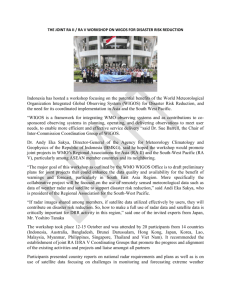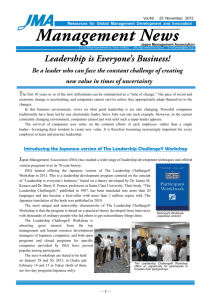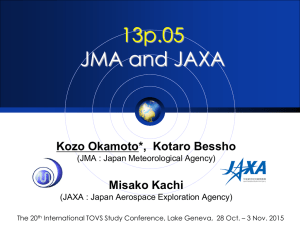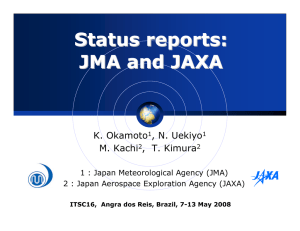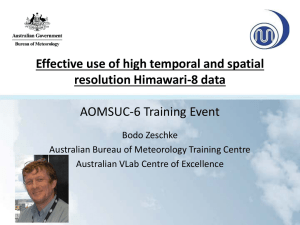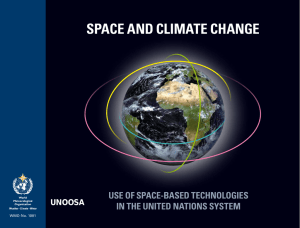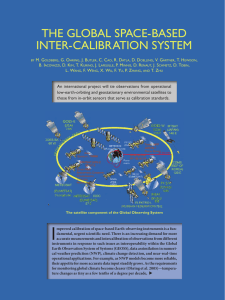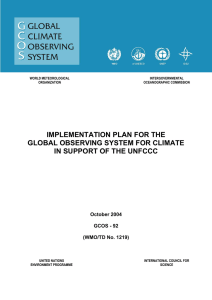OBSERVING WEATHER AND CLIMATE WITH THE HIMAWARI SERIES SATELLITES
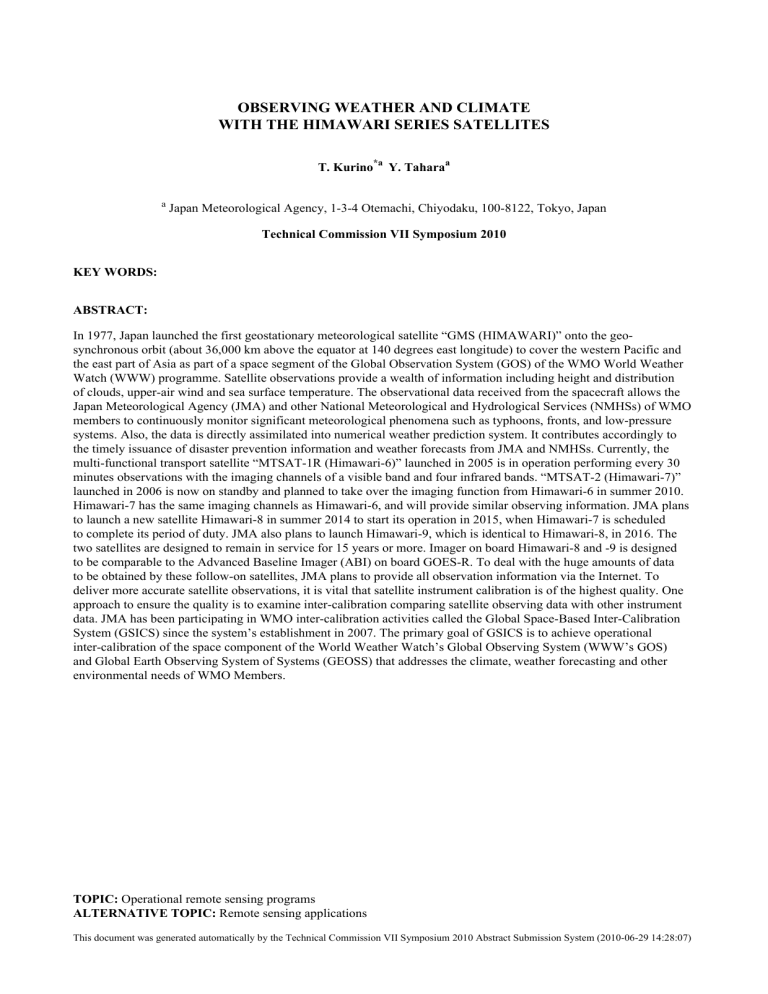
OBSERVING WEATHER AND CLIMATE
WITH THE HIMAWARI SERIES SATELLITES
T. Kurino
*a
Y. Tahara a a
Japan Meteorological Agency, 1-3-4 Otemachi, Chiyodaku, 100-8122, Tokyo, Japan
Technical Commission VII Symposium 2010
KEY WORDS:
ABSTRACT:
In 1977, Japan launched the first geostationary meteorological satellite “GMS (HIMAWARI)” onto the geosynchronous orbit (about 36,000 km above the equator at 140 degrees east longitude) to cover the western Pacific and the east part of Asia as part of a space segment of the Global Observation System (GOS) of the WMO World Weather
Watch (WWW) programme. Satellite observations provide a wealth of information including height and distribution of clouds, upper-air wind and sea surface temperature. The observational data received from the spacecraft allows the
Japan Meteorological Agency (JMA) and other National Meteorological and Hydrological Services (NMHSs) of WMO members to continuously monitor significant meteorological phenomena such as typhoons, fronts, and low-pressure systems. Also, the data is directly assimilated into numerical weather prediction system. It contributes accordingly to the timely issuance of disaster prevention information and weather forecasts from JMA and NMHSs. Currently, the multi-functional transport satellite “MTSAT-1R (Himawari-6)” launched in 2005 is in operation performing every 30 minutes observations with the imaging channels of a visible band and four infrared bands. “MTSAT-2 (Himawari-7)” launched in 2006 is now on standby and planned to take over the imaging function from Himawari-6 in summer 2010.
Himawari-7 has the same imaging channels as Himawari-6, and will provide similar observing information. JMA plans to launch a new satellite Himawari-8 in summer 2014 to start its operation in 2015, when Himawari-7 is scheduled to complete its period of duty. JMA also plans to launch Himawari-9, which is identical to Himawari-8, in 2016. The two satellites are designed to remain in service for 15 years or more. Imager on board Himawari-8 and -9 is designed to be comparable to the Advanced Baseline Imager (ABI) on board GOES-R. To deal with the huge amounts of data to be obtained by these follow-on satellites, JMA plans to provide all observation information via the Internet. To deliver more accurate satellite observations, it is vital that satellite instrument calibration is of the highest quality. One approach to ensure the quality is to examine inter-calibration comparing satellite observing data with other instrument data. JMA has been participating in WMO inter-calibration activities called the Global Space-Based Inter-Calibration
System (GSICS) since the system’s establishment in 2007. The primary goal of GSICS is to achieve operational inter-calibration of the space component of the World Weather Watch’s Global Observing System (WWW’s GOS) and Global Earth Observing System of Systems (GEOSS) that addresses the climate, weather forecasting and other environmental needs of WMO Members.
TOPIC: Operational remote sensing programs
ALTERNATIVE TOPIC: Remote sensing applications
This document was generated automatically by the Technical Commission VII Symposium 2010 Abstract Submission System (2010-06-29 14:28:07)
